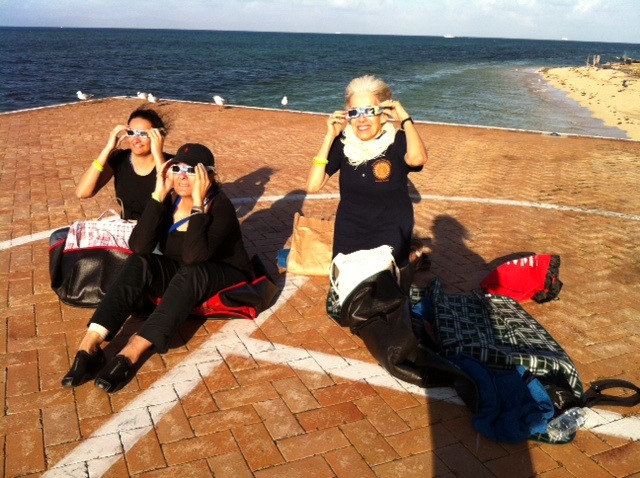I'd been thinking, en route in early November to Australia for my eighth total solar eclipse, that I’d spent more than enough time and money chasing the shadow of the moon. I figured I'd give up the quest after this one last exposure. But then the weather on Green Island cleared, after a string of gloomy mornings, to reveal the sunrise eclipse.
I watched from a waterside helipad with five friends, four of whom had never seen an eclipse before. Their first-timers’ anticipation upped my own excitement, especially when I realized I would need to seize the right moment for them to remove their protective glasses and stare naked-eyed at totality. I’d never been in that position of responsibility before.
Now. Take off the glasses. Oh my God. There's the diamond ring!
The sight, familiar but ever foreign, framed the black circle of the eclipsed Sun in a halo of silver and red. The whole world around us -- sky, sand, sea -- changed color, and the air grew colder. Clouds along the horizon threatened to blot out the spectacle at any moment. Instead they only skirted the Sun, as though to remind us how lucky we were -- how close we had come, thousands of miles from home, to seeing nothing.
I felt perfectly happy for the whole two minutes -- for the fleeting two minutes -- that totality lasted. When it ended too soon, as it always does, the euphoria hung on for days. And now of course I'm scheming for the means to view upcoming exotic eclipses in Africa and the Arctic, until August 21, 2017, when the path of a total solar eclipse will traverse the United States, cutting a diagonal swath from Oregon to South Carolina. It's not too early to start considering the ideal perch.

